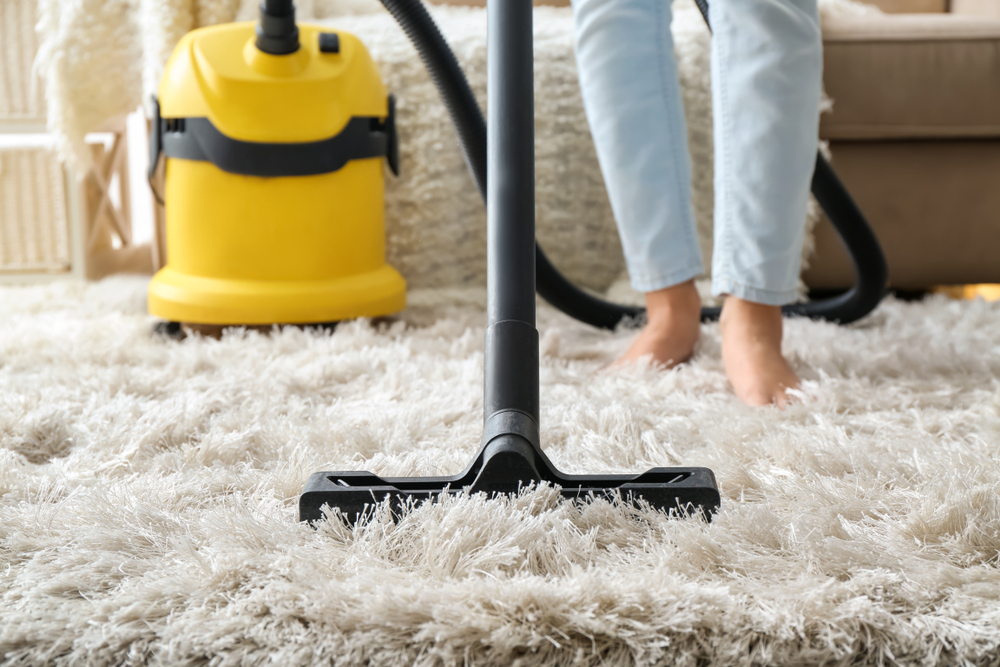Different Types Of Carpet And How You Clean Them
Carpets. Love them or hate them, most of us have them…
Now, carpets have a number of things in common. The most important of them is that they cover the floor. Next comes the fact that they get walked on! As a result, get all get dirty.
Sooner or later we decide we have to clean our floor covering. But that is not quite as simple as it sounds as if it should be.
That’s because all of the many different types of carpet fibers require different cleaning methods and products. Carpets are made differently. And in order to take care of them properly, you need to know some basic facts about the carpets you have. When in doubt you can either check the label or even go back and ask at the store where you bought it. They will be more than happy to give you the information you need..
In this article, we will give you the facts about the popular types of carpet fibers and their different piles. We will also discuss how best to clean them:
1. Let’s start with hugely popular synthetic carpets.
All synthetic carpet brands are made from either nylon or polyester or often a blend of the two. Regardless of its synthetic fiber content, the best way to clean all of them is the simplest and most common method possible. Simply use the vacuum cleaner. The more often you vacuum a polyester, nylon or blended carpet the better it will look. the longer it will last, and the happier you will be.
As pointed out above, there will be a label on the back of your carpet that warms about the use of any chemicals that would prove detrimental or even harmful to your floor covering.
There might be times that you feel that your carpet really needs a deeper cleaning than vacuuming alone provides. In this case, you could try a little baking soda mixed with warm water. Nylon, polyester, or blended carpet contains tightly packed fibers which make it extremely wear-resistant. Many people find this attractive because it means that their new carpet is likely to last for a long time.
However, the tightly packed fibers make it hard to clean stains. That is why many carpets come with a stain-resistant option. This is always a good idea if it is available.
2. Woollen Carpets
Your vacuum cleaner is just as essential for cleaning a woolen carpet as it is for a synthetic blend. But,if you do need to clean it remember to be very careful about the choice of product you use. It’s best to avoid anything with high alkaline content. If you are not sure what your carpet is made of you can always check the fire safety label. If it says it is flammable, then it is probably made of wool.
You should NEVER use bleach on a wool carpet. If you do, you will destroy the fibers themselves and cause a patch of discoloration.
3. Other Natural Fibres
Some carpets are made of natural fibers such as Jute or Sisal. These types of floor covering are quite sensitive to dirt and susceptible to stains. Although regular vacuuming is to be desired, these plant-based fiber carpets tend to get dirtier, quicker. Stain removal needs careful attention. If you do use a cleaning machine, make sure it’s always set to the lowest possible setting. That way you avoid disturbing the lay of the fibers. Also, always use a fan or the air conditioning to aid drying. Left wet for too long the edges of your carpet will curl.
4. Berber Carpets
Berber carpets have large “loops” in their weave. This makes them so much easier to clean because dirt and contaminants are not able to penetrate deeper than the loops themselves. For best results, vacuum several times a week and do a deep clean every three or four months. Most cleaning products can be used and will work just fine.
5. Cut Pile carpets
All types of carpets need regular maintenance in order to keep clean and maximize their useful life. Cut pile carpets are no exception. Make sure that any lite dirt is vacuumed daily. This is because the longer it gets left, the harder it becomes to remove. When you do vacuum, make sure to only use the cylinder with the suction hose. The rotating brushes will snag the loops and start to damage your carpet.
It is very important that you know the type of covering on your floors. This is easy if you purchased the carpet yourself but may be more challenging if you ‘inherited’ them. When all else fails, check the label, clean appropriately and enjoy your carpets.



